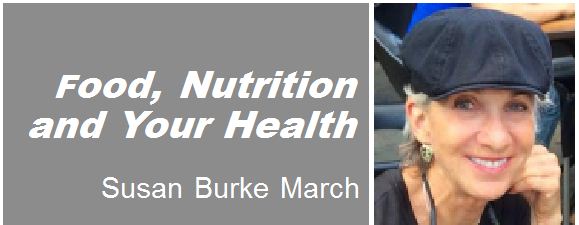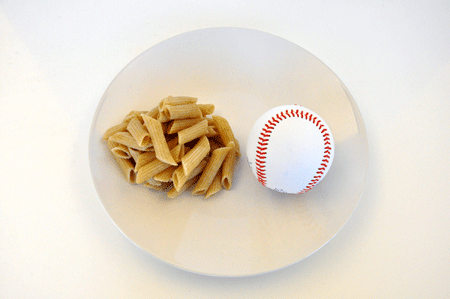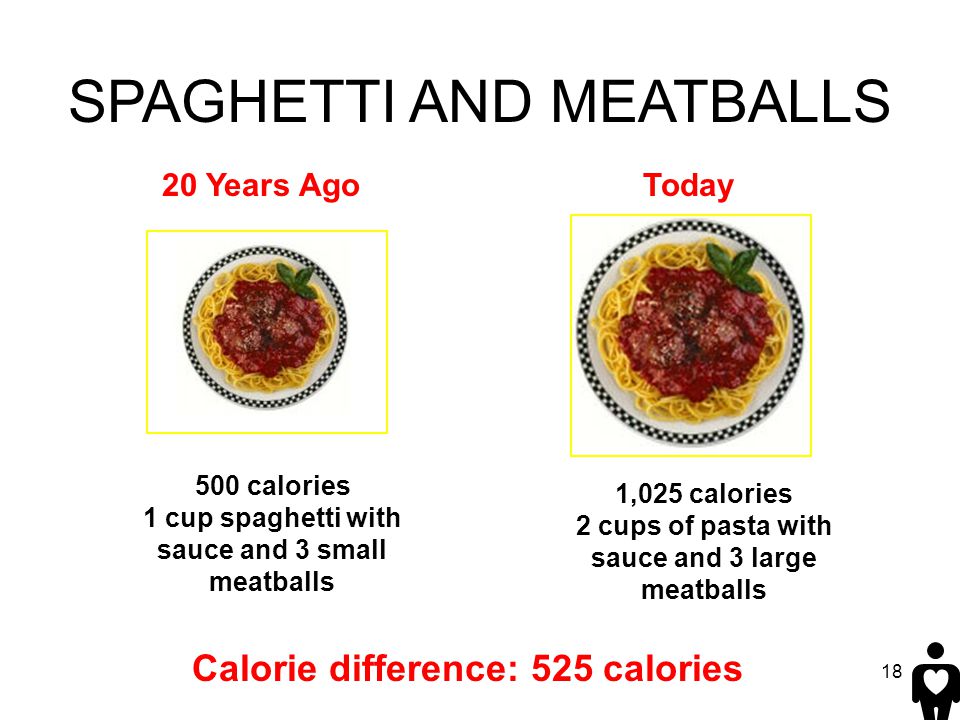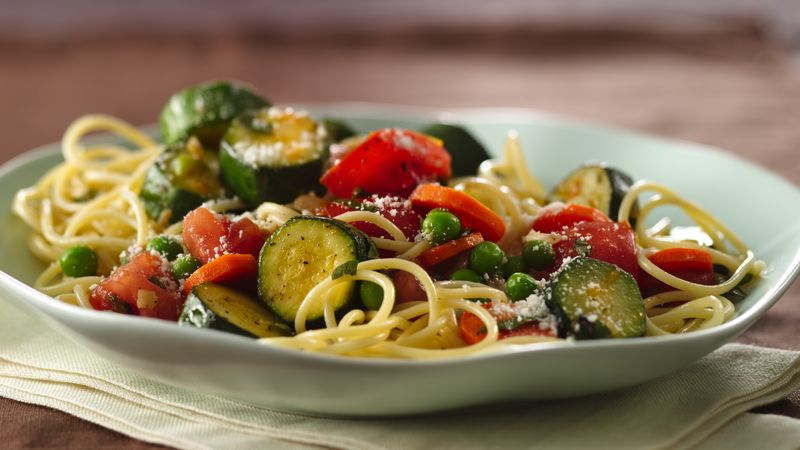The Italian paradox: How can you eat pasta without gaining weight?
 Quick! Don’t think about it, just answer. If you’re buying dried pasta, what is the very first line you should read on the Nutrition Facts label?
Quick! Don’t think about it, just answer. If you’re buying dried pasta, what is the very first line you should read on the Nutrition Facts label?
If you said calories, you’re wrong.
Fat grams? Nope.
Carbohydrates? Wrong again.
The most important piece of information on the Nutrition Facts label is the serving size. Know that, and you know everything you need to know.
And there is a big difference between what’s listed on the package as “serving size” and a portion of food that’s typically consumed. More to follow.

I read a headline that made me laugh. Eating pasta won’t make you fat, study reveals.
I’ve been to Italy, and Italians eat pasta, and they’re not fat. Surely we didn’t need a study to tell us that — did we?
A BMJ Open study described a meta-analysis of 30 randomized controlled trials involving 2,488 participants who substituted dried pasta (cooked) instead of carbohydrates like white bread or white rice three times per week. They also ate a low-glycemic index diet.
What is a low-glycemic index diet? The authors of the study stressed this was key to the findings.
The low GI diet is based on the concept of the glycemic index, which ranks foods on the rate at which the body breaks it down to form glucose.
The people who took part in the study ate on average 3.3 servings of pasta per week instead of other carbs. But, they ate it with low-glycemic index vegetables, which means crunchy veggies like broccoli, cauliflower, and squash and greens and tomatoes instead of starchy ones like potatoes and corn.
Importantly, the scientists used what is listed on the Nutrition Facts label as a serving of pasta. Each serving was equivalent to about a half-cup of cooked pasta.
The researchers concluded, “Pasta didn’t contribute to weight gain or increase in body fat … and we can now say with some confidence that pasta does not harm body weight outcomes when it is consumed as part of a healthy dietary pattern.”
But, let’s look closer at this study.
Remember the question, “What’s the first line you should read on the Nutrition Facts label?”
Serving size.
Again (sorry, but I’m trying to make a point here), what was the amount of pasta included in this study?
The people involved in the study ate 3.3 servings of pasta a week instead of other carbohydrates. And one serving was one-half cup of cooked pasta.

One cup of cooked pasta is 1/2 cup and looks like a baseball. Doe this look like your typical serving of pasta?
That’s about the size of a baseball. Pretty small. Remember, that is cooked pasta.
Because the study participants all replaced one serving of carbohydrate like bread or rice with pasta, three times a week they concluded that you can eat pasta without gaining weight.
Have you heard of the term “research bias?” As reported in the New York Times, “Research studies financed by the food industry are much more likely to produce favorable results than independently financed research.”
For this pasta study, the researchers did note that “Some of the authors have received prior research grants, in-kind donations of pasta for a randomized controlled trial, and travel support from the pasta maker Barilla.”
As reported in Nutrition Coalition, “Established media outlets such as Newsweek, New York Daily News and Business Insider reported on studies by Barilla-funded scientists without scrutiny, with headlines declaring that eating pasta is “linked to weight loss.”
Buzzfeed noted that since 2008, at least 10 peer-reviewed studies about pasta have been either funded directly by Barilla or carried out by scientists with financial connections to the global pasta giant. A researcher noted that Barilla had contributed $456,000 to his research between 2004 and 2015, as well as travel funding.
As Marion Nestle, Ph.D., food expert, author, and blogger on Food Politics writes, “I consider industry-funded research to be about marketing, not science.”
So, I don’t take issue with the findings, as presented. But, here’s the thing. No one eats a half-cup of pasta. And they don’t eat it naked.
Serving size vs. portion size
There’s a weighty difference between a typical portion of pasta and what the manufacturers consider a “serving size.”
A serving of pasta is listed as a half-cup cooked, which weighs just two ounces — or only one-ounce, dry.

20 Years Ago. Today. 500 calories. 1 cup spaghetti with sauce and 3 small meatballs. 1,025 calories. 2 cups of pasta with sauce and 3 large meatballs. Calorie difference: 525 calories.
It is not the pasta that makes it “fattening,” it’s the topping.
Most people eat at least one cup or more likely two cups. That’s 220 calories. And that’s without the sauce, or oil, nada. Add just a half-cup of cream-based Alfredo sauce and now you’ve upped the ante to about 450 calories plus 20 grams of added fat. And that’s why eating “pasta” makes you fat.
Mangia e divertiti!
So, do as the Italians do, and make the focus of the pasta an equal amount of savory sautéed vegetables such as broccoli, fresh tomatoes, kale, onions, and peppers. This is how to make your pasta with a lower glycemic impact, and adds antioxidants and fantastic flavor — without adding fat and calories. I’ve got a great recipe! Write to me at susanthedietitian@gmail.com.
All pastas are not equal. Some are just plain harina, or white flour. Some are made from semolina wheat, and most Cuenca grocery stores, especially supermercados like Supermaxi and Gran Aki carry several different brands of pasta, including Barilla — and some offer whole-wheat pasta — whole wheat has a lower glycemic index because it contains more fiber and protein too.
Back to the study that concluded eating pasta three times a week won’t make you fat. Of course, it won’t. But it won’t “cause” you to lose weight. With pasta, it’s about the additions and the portion size.
And as for the science, well, Barilla knows. Why not toot your horn? Who else will?
Be sure to watch this video above. It’s a hoot!
Sources:
Business Insider. Eating pasta 3 times a week won’t make you gain weight, according to a new study — and it could even make you lose it.
Nutrition Coalition. “Big Pasta” cooks up self-interested nutrition science.
The New York Times. Bias is found in food studies with financing from industry.
______________________________
Food, Nutrition, and Your Health columnist Susan Burke March moved to Cuenca after 35 years as a Registered and Licensed Dietitian and Certified Diabetes Educator in the United States. She currently serves as the Country Representative from Ecuador for the Academy of Nutrition and Dietetics.
Susan helps people attain better weight and health, and reduce the risk of heart disease, diabetes, and other conditions that can be improved with smart lifestyle modifications.
Susan is offering “Free” 20-minute consultations for just a $15 donation to one of the important foundations here in Cuenca. It’s a perfect time to address issues such as cooking at home, strategies for weight loss, or boosting your immunity by improving your diet.
Contact her at SusantheDietitian@gmail.com






















